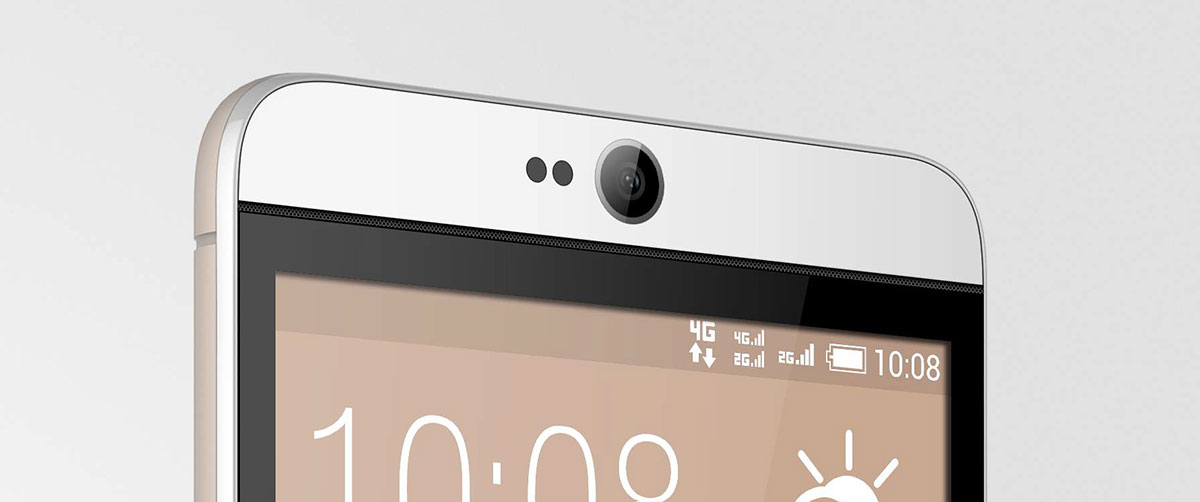Mobile World Congress isn’t even here, and HTC is already giving us a hint of what it will probably be showing off there, as it launches yet another Desire model, this time with its special UltraPixel camera for taking self-portraits.
CES isn’t just the hotbed of computers, cars, headphones, media players, and random gadgets it used to be, with phones also being launched at the tech show there, too. We’ve seen a few this week, and there are probably a few more for us to wade through before we’re done, but HTC is taking the time at CES to show off a new handset making its way to hands this year.
It’s a new mid-to-high-end phone, and this one is the Desire 826, a 5.5 inch smartphone with a Full HD display (1920×1080), 64-bit Qualcomm Snapdragon 615 clocked at 1.7GHz, 2GB RAM, and Android 5.0, also known as “Lollipop”.
HTC’s Desire 826 appears to be very similar to HTC’s Desire Eye, which was recently launched in Australia at the end of the year, with a close design, practically identical screen, and the same 13 megapixel camera on the back.
Where HTC is changing the formula, however, is with the front-facing camera, and HTC is relying on one of its UltraPixel cameras here, meaning that 4 mega— sorry, UltraPixel camera used in the HTC One M8 for the rear camera will be instead made the front camera of the 826.
What does this mean?
Potentially better low-light selfies shot at 4 megapixels (sorry, HTC, but regardless of naming or monikers, the current megapixels applied to an UltraPixel camera is four), as well as some of the interactive elements of HTC Zoe possibly working as well, making it possible to erase elements shot behind you during a self-portrait, extra effects added over the top, and more.
HTC will also be adding what it calls “Live Makeup” to the phone which sounds an awful lot like the beautification modes other front-facing cameras use to soften skin, but there will also be a “Face Fusion” mode to merge your face with that of others.
But all in all, we’re very much reminded of the Desire Eye with the 826, as while the chip has changed and the front-facing camera is now a different module, it all seems very familiar. Just in case you weren’t confused enough, HTC will also reportedly be making versions of the Desire 826 without the UltraPixel camera and substituting it instead with the 13 megapixel camera… making it into a Desire Eye with a different chip.
It’s a little confusing, to say the least, and it could get a little messy trying to work out which phone you should end up with. Sufficed to say, this isn’t the last HTC announcement for the year, with Mobile World Congress coming in March, with what will likely be a new HTC One M flagship making its presence known there, and possibly with an UltraPixel front-facing camera, given what we’re seeing from this new Desire handset.
As for release on the Desire 826, there’s no news yet, though HTC has said it should be coming to retailers and operators in the Asia-Pacific region near the end of January. Generally, that tends to include Australia, so look for more information on this phone in the coming weeks.





